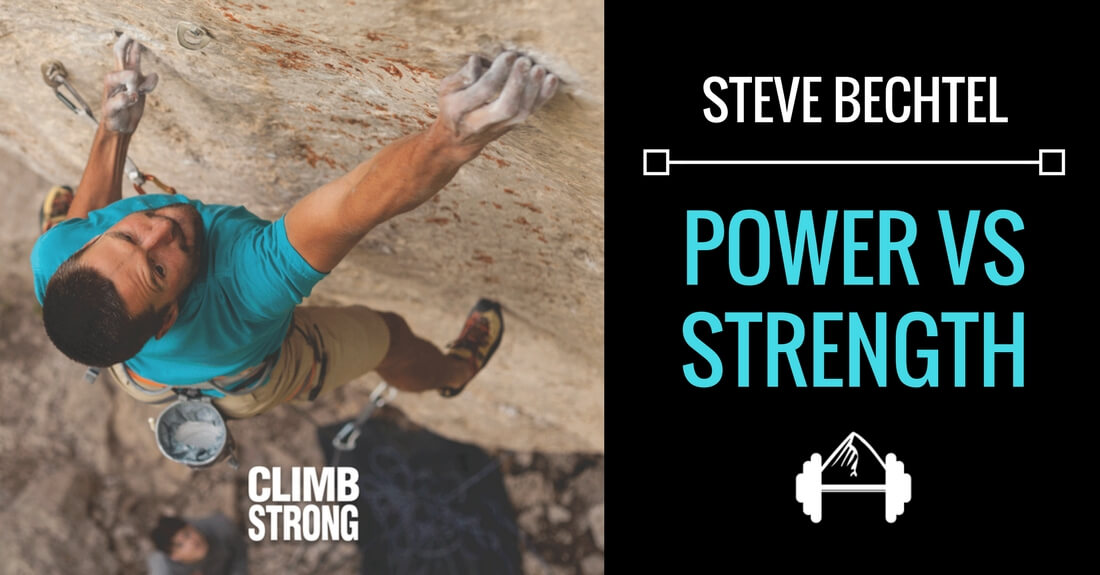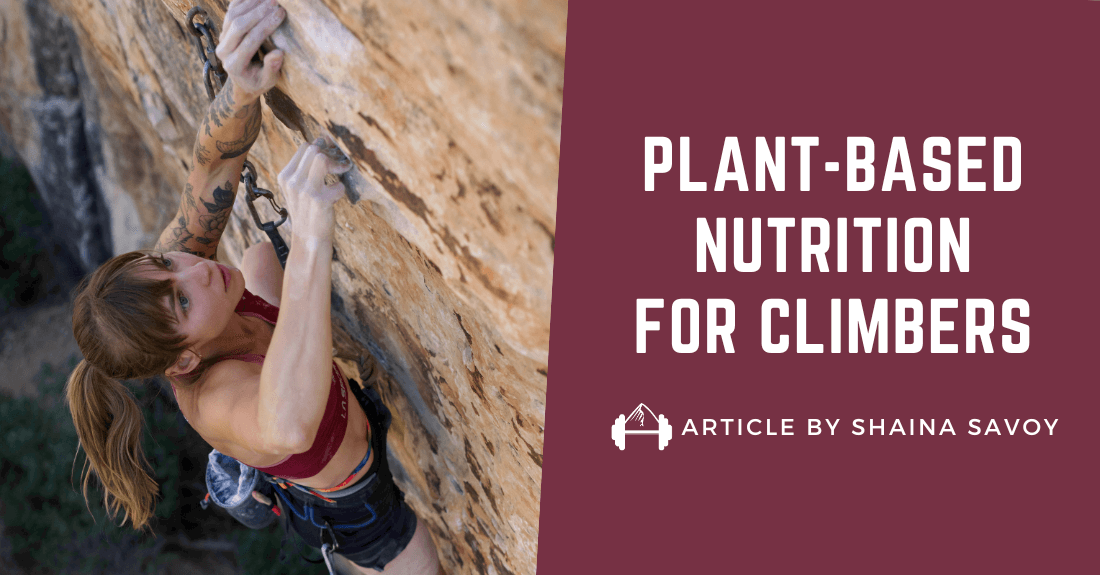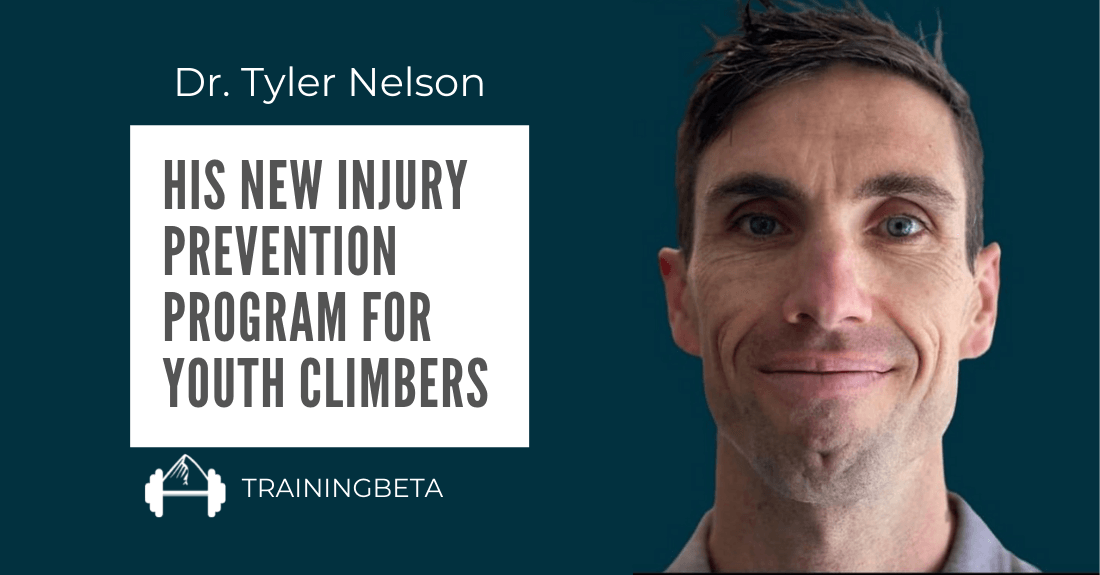In his most recent TrainingBeta Podcast, climbing trainer and coach Steve Bechtel talks extensively about how to design your own training program. Ultimately, a lot of his and Neely’s discussion revolves around how using a nonlinear periodization model is a great way to train for more year round climbing performance (it’s a great episode and you can listen to it/read it here).
Steve is a huge advocate of nonlinear periodization and lays out what he feels is the best way to train based on it in his new book Logical Progression. The book is a great resource and gives you an easy to understand program that takes all the guess workout out of your training.
Logical Progression is available on TrainingBeta as an ebook and is definitely worth checking out!
However, to follow the nonlinear periodization Steve is advocating you really need to understand the difference between power and strength. One of our listeners, Richard, recently asked that we clarify power vs strength and Steve’s answer was so good we thought we’d share it here.
Richard’s Question:
This was a great podcast. One question that causes me constant confusion with training programs is differentiating between a strength vs power exercise, especially when it comes to weight training. Hangboarding versus campusing is an obvious differentiation between strength and power. But when is a weight exercise strength vs power? I’ve often heard the difference between strength and power is that strength is static, whereas power needs to involve movement. Is a single max weight pull-up strength or power? Or a single rep max weight curl or benchpress? Are those strength or power exercises? Given that Steve describes the strength workout as doing squats or dumbbell rows, why are these strength versus power? I would have guessed most weight exercises would be power, with negatives being an exception as they are trying to hold the weight instead of moving the weight. If you could help answer this question, it would clear up a lot and help me with my own training programs.
Steve Bechtel on Power vs Strength:
When we start talking about the technical side of training, there is frequently confusion between the terms strength and power, and rightfully so in climbing. Strength and power are closely married in our sport, so much of the differentiation is irrelevant and artificial. Let me quickly define the two:
Strength is the ability to generate force, regardless of the time it takes. Picking up a heavy weight or holding onto a small edge are both displays of strength.
Power is strength displayed over time, or strength x speed. Jumping into the air or catching an edge at the end of a long reach are both displays of power.
We often tell people that power exercises are the ones you can’t do slowly or stop in the middle of. You can see this clearly if you compare a squat (strength) versus a box jump (power). If you stop in the middle of the box jump, you can’t complete the rep. In climbing movement, many climbers move too statically, dependent almost exclusively on strength, and thus limit their progress. Optimal movement requires a good mix of both.
Confusion arises when we hear things like “strength and power are best developed in sets less than 10 seconds in length.” Well, which is it? Am I training strength in this exercise or power? Go back to the speed question when in doubt. A 1-rep max weighted pull-up is a very slow movement, so would be on the strength end of the continuum. A single max double on the campus board would be a power movement, at the other end of the continuum. Most climbs require that we move back and forth between these two qualities constantly.
There is also a good deal of confusion between the different types of strength. In simple terms, there are three movement types we do for strength:
Eccentric, where the muscle lengthens under load, as in lowering down after a pull-up.
Concentric, where the muscle shortens under load, as in pulling up to the bar.
Isometric, where the muscle is held statically under load, as in locking off at the top.
In climbing, finger strength is generally displayed isometrically, and the majority of the other muscles operate first concentrically, then isometrically. Most weight training movements feature all three actions in each repetition.
The take home is that strength is the master quality. By getting stronger, you develop a greater potential for power. Your training should feature both explosive exercises and slow strength exercises. Most of all, your supplemental strength training should support your sport-specific training, rather than overtaking it. The goal of supplemental resistance training is to keep climbers injury-free and to help them be better athletes.
Steve Bechtel’s Logical Progression
If you like what you read here, be sure to check out the full Logical Progression ebook for yourself.
Here’s what Steve has to say about the program:
“Training for climbing can be fun, but sticking to a schedule can be desperately hard. Many climbers have seen the value of a carefully planned out, periodized training program. Clearly, such programs work, but many of us can’t stick to such a rigid schedule.”
“What if there were a better way? What if there were a more flexible way of planning that provided the same great results? And what if such a program allowed you to maintain high levels of climbing performance much longer than you could on a traditional program?”
“For the climber that has limited time to train, there may be no better program than Logical Progression. For anyone who wants to get fit and stay fit for long trips and redpoint seasons, the program outlined in this book can give you a great advantage.” – Steve Bechtel
Steve’s book is definitely worth a read! However, if Logical Progression doesn’t sound like the right fit for you, we offer a variety of programs that train everything from endurance to finger strength. Check them all out by clicking through below!
TrainingBeta Programs: All Our Training Programs
(photo courtesy of climbstrong.com)
Other Articles You Might Like:
- Power and Strength: What They Are and How to Train Them
- 8 Functional Strength Training Exercises for Climbing
- Strength Training: The 4 Basic Movements You Should Be Doing
- Weight Lifting Guidelines with Steve Bechtel






Leave A Comment